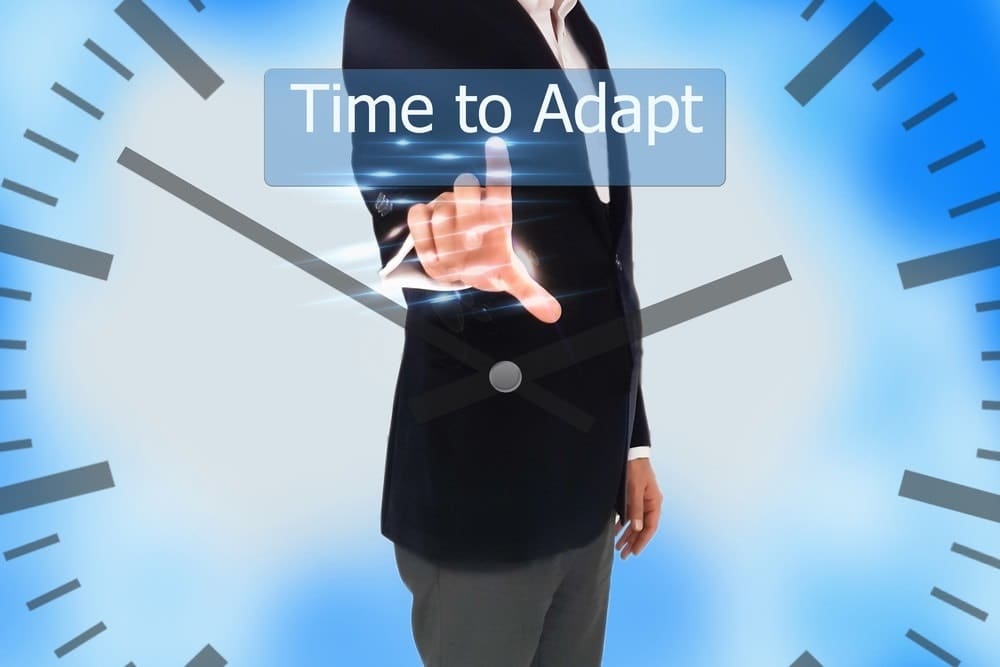Modern Finance’s Imperative to Manage Risk with Data
While businesses have more information than ever to drive decision-making, many are struggling to shift organizational structures and manage data to minimize business risk. Eric Dowdell, Global Head of Dun & Bradstreet’s Trade Credit business, dives into the relationship between risk and data and discusses how the utilization of data should be changing risk management practices.
Over the past 10 years, I’ve seen the way business is done change at a dizzying rate as global macroeconomic conditions shift and the pace of innovation accelerates. Thought leaders continue to predict an array of changes to the inside of businesses: flatter organizational structures, remote-friendliness with mobile work capability in organizations’ DNA and the horizontal flows of ideas and information rather than trickling down, as in historical work environments. I see some of these trends already manifest in innovative organizations that are able to stay on top of global market risk due to their agility, adoption of new technologies and willingness to collaborate.
“In the corporate context, innovation can be defined as the profitable implementation of creative ideas,” writes Jeffrey Baumgartner, blogger and author of the book, The Way of the Innovation Master. “Profitable implementation means that the ideas, once implemented, have to deliver value to the organization.”
There’s a huge opportunity for the future of finance to deliver value through innovation as the very definition of risk changes. From building internal cultures around innovation to exploring opportunities for automation to becoming inspired by the possibilities of data, AI, blockchain and machine learning, the business world is especially hungry for a new breed of finance leader to help navigate through the new complexities of risk management.
Decades ago, decision-making was top-down because information asymmetries were sustainable. When business was done with a physical handshake and accounts payable was a piece of paper, information could stay need-to-know. With the dizzying acceleration of technology and globalization, paralleled by the acceleration of associated risks, organizations are hungry for leaders who can make sense of shifting organizational and economic landscapes.
Where there is Risk, Look to Data
The modern, interconnected world demands a modern vision of what risk means. Risk isn’t what it once was. It’s no longer a manageable series of outcomes based on data points pulled from the past. Risk today, I’ve seen, is far more future-oriented and dynamic. The way we manage risk has the potential to reap windfalls for corporate growth or deliver crippling debt. So, how should the modern corporate finance leader look at risk?
Risk demands attention from the top. Finance leaders use active risk management to improve the accuracy of results, optimize resource allocation, protect organizational assets and enable data-driven decision-making by all departments. Seizing business opportunities is often heavily dependent on the finance team’s ability to identify, assess and manage risks. Deficiencies in this area are risking the business and exposing vulnerability, not to mention leaving opportunities on the table.
The wealth of data that’s now available has created new opportunities for business growth and risk management to become part of an intertwined ecosystem horizontally across the company instead of separately managed functions or silos. Seeing innovators at the cutting edge making sure their team’s data insights flow across the organization is truly exciting to me. Many are leveraging master data and a standardized data structure to push these insights in the hands of sales and marketing teams. “For data to have value, it has to be in motion and flow across an organization,” says Scott Taylor, Dun & Bradstreet’s Market Development lead for Master Data. The whole organization wins when teams collaborate and information is shared. The upshot in this scenario is that sales and marketing teams, when deepening existing relationships or developing new ones, do so with the organization’s best interests quantified and accessible.
Managing big data isn’t so much about volume anymore — or even about data itself. Managing big data is now about extracting the most important insights from the data and using it to advance good relationships and mitigate the effects of bad ones. This means that even as datasets expand and new metrics are developed, I believe the most innovative enterprises — the billion-dollar companies of tomorrow — will be ready to draw the right insights to find the right business relationships and avoid the wrong ones.
Whether local or global, the business relationships we nurture today are those that will one day determine our future profitability and sustainability. Outsmarting risk is all about knowing the truth about who you’re doing business with — whether it’s a customer, a supplier or a vendor. With an understanding of these relationships, who they are, where they came from and the risk associated with them, finance leaders can make more profitable and sustainable decisions while adhering to varying compliance requirements.
Of course, the truth about your business relationships often changes, and world-class companies know this. The enterprises of the future are aware of how powerful data-driven decision-making can be when appropriately calibrated – and how quickly the most predictive set of indicators can change and require recalibration. That’s why the time to embrace innovative practices in risk management is now.
It’s tempting to keep information safe in silos in order to keep it from spreading, taking on a new life of its own and becoming amorphous. We humans often love to control individual outcomes with our hands and minds, even when bandwidth and new complexities make this impossible. It’s tempting to add value by understanding and digesting a small subset of reports and a small, controllable subset of risks. Changing behaviors and beliefs can be daunting, to say the least. Yet, scaling faster and more dynamically is an imperative of any modern organization facing today’s global risks. The future of value in finance is embracing the idea of intrapreneurship, as well as delivering the functional expertise that only finance, credit and risk leaders can provide.
This piece was originally shared on Dun & Bradstreet’s Perspectives blog and is republished here with permission.



 Eric Dowdell is the global head of the Trade Credit line of business for Dun & Bradstreet, overseeing its strategy and operations across the entire enterprise. Previously, he served as the Vice President of Global Risk & Supply Chain Solutions, as well as Chief of Staff for Dun & Bradstreet.
Eric Dowdell is the global head of the Trade Credit line of business for Dun & Bradstreet, overseeing its strategy and operations across the entire enterprise. Previously, he served as the Vice President of Global Risk & Supply Chain Solutions, as well as Chief of Staff for Dun & Bradstreet.










